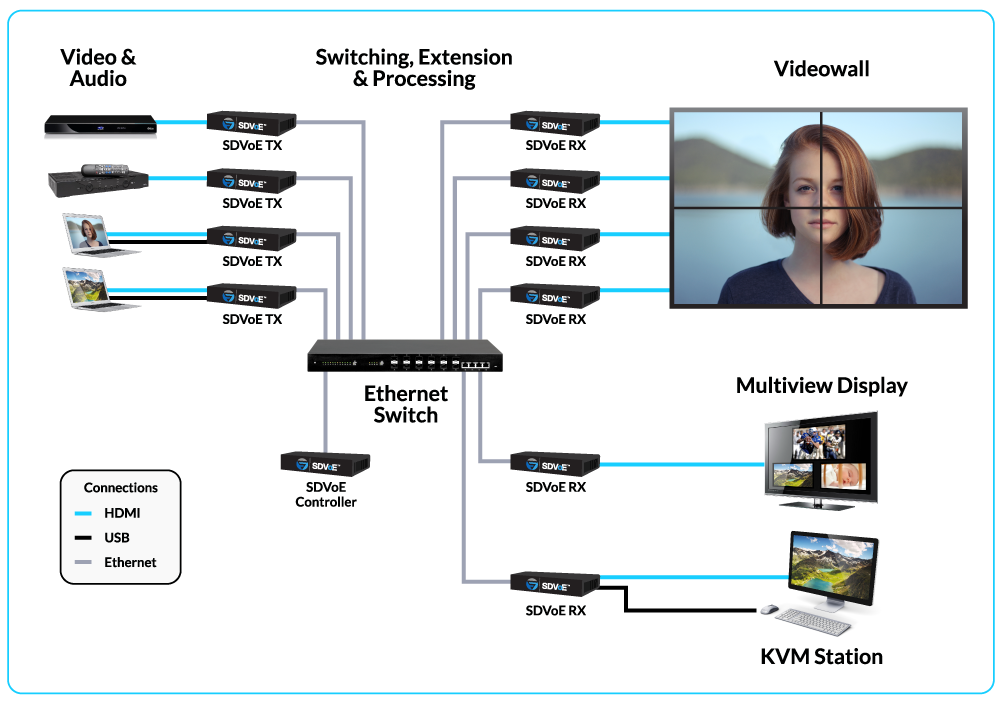Comparison: SDVoE vs. traditional HDBaseT system design
| SDVoE | HDBaseT | |
|---|---|---|
| Zero latency delivery | ✔ | ✔ |
| No image artifacts | ✔ | ✔ |
| Unified audio, video, and control | ✔ | ✔ |
| Flexible off-the-shelf switching infrastructure | ✔ | x |
| Cost | $ | $$$ |
| Number of devices | Minimal | Double |
| Built-in video walls | ✔ | x |
| Built-in image compositing | ✔ | x |
| Multi-vendor interoperability guaranteed by API | ✔ | x |
| Susceptible to EMI | x | ✔ |
| Shielded Category cable recommended (required) | x | ✔ |
SDVoE- based systems are a far better solution than those based on HDBaseT. SDVoE requires fewer devices, costs less, and most importantly, meets the performance and bandwidth requirements of today, and into the future.
These two diagrams compare a traditional HDBaseT matrix switch design with an SDVoE-based approach. Both systems are designed to meet the same requirements: switching of multiple inputs, extension, a 2×2 video wall, one multi-view display and KVM control over sources. The SDVoE system design is very streamlined, requiring only half the number of devices as a traditional approach.
Traditional matrix switch-based design using HDBaseT – 22 devices required

SDVoE design – only 12 devices required

This dramatic simplification of system design is one of the major advantages of SDVoE. Not only do SDVoE systems employ fewer devices than HDBaseT systems, but because they use off-the-shelf Ethernet components, they result in lower cost designs, especially as system requirements scale-up in size. Often, an SDVoE system design results in a system budget cost savings of 30% to 50% over an HDBaseT design.
Topics
Stay
informed
Keep up to date on SDVoE Alliance news and events. Subscribe to our newsletter.

